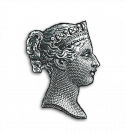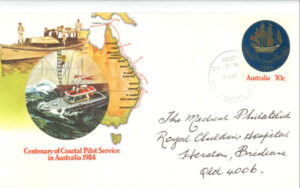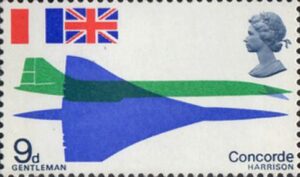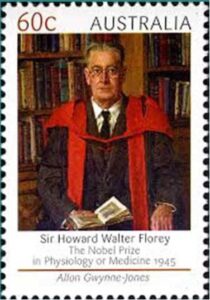Members Interests
For a small club, we are very proud of the variety in our collections. Naturally, we have strength in Australia, as well as in our neighbour Papua New Guinea, but as can be seen from the maps below, we collect from around the world. The numbers next to the country indicate how many members collect from that area. Members variously have traditional, postal history, postal stationery, aerophilately, marcophily and postcard collections.
Be sure to read the member’s articles at the bottom of this page. Members have written about aspects of their collection that it is not always possible to document or describe on philatelic display pages. The maps and the information on wider interests below have been updated to reflect the membership in July 2023.


The PSQ membership can also demonstrate wider, thematic, and non-country specific collecting and research interests including:
Animals: Elephants, kangaroos, koalas, waterfowl, cats, and thoroughbred racehorses.
Christmas: The Lions Christmas seals of 1984 and 1985 (Australia) and the Christmas charity stamps of Denmark.
Cigarette cards: A wide variety of subjects.
History of the Post: Queensland receiving offices; Great Britain pre-philatelic and early covers; Australia Post at Expo 88; Moreton Bay postal history, especially Ipswich & the Reverend Rumsey correspondence; Postal history of the Rossendale Valley, Lancashire, GB; Early mail routes of Australia and of the Ottoman Empire using Google Earth;
Humanity: The human senses; Medical history and the St. John’s Ambulance Service.
Machine printed stamps: Australia Frama and Great Britain Horizons.
Marcophily and perfins: Queensland postmarks; Ottoman postmarks; Numbered postmarks and perfins on a multi-country basis; Baeza cancellers of Madrid.
Military and Related History: The Villiers-Bretonneux Australian National Memorial; German, Italian and other Axis Second World War Internee and POW mail to and from Australia; New Guinea Campaign mail of WW II.
Postcards: Pre-1950 Brisbane views postcards; Postcards of Gold Coast (Ghana) and Muizenberg/Cape Town; Queensland Intelligence and Tourist Bureau postcards; Steam locomotives and railways of Great Britain.
Revenues: Early Queensland revenues; Railway revenues of South Australia.
Sport: The game of golf; The Melbourne 1956 Olympics.
Stamp Designs: British Empire stamp design features to the First World War; Design errors on stamps.
Transport history: Aviation history; The evolution of water transport; British steam railways; Maritime history including a collection of paquebot items; Balloons (world-wide) and Zeppelins.
We draw upon these diverse interests for our program of talks at monthly meetings.
We encourage members to take advantage of their collections for Club, State, National and International exhibitions.
Members Articles
In this section, members write about some general interest aspects of their collections.
Collecting the Ottoman Mail by Mike Freeman
I have been collecting Ottoman stamps and mail since 2008, and I am only scratching the surface. This is also a journey to better understand a 600-year Empire that was only briefly mentioned by my history teacher at school. I enjoy the art and elegance of Ottoman philately.
The Ottoman Empire received its name from its founding Sultan, Osman I, who began to build the Empire around the year 1300 CE. At its peak at the end of the 17th Century it had a land area similar to the Roman Empire at its greatest extent. By 1862, when the Ottomans were building their postal network and began to issue stamps, the Empire was in decline, but still covered a large area: Anatolia (Turkey), Syria and the Holy Land, Iraq, the north-eastern and western coasts of what is now Saudi Arabia, the coast of Libya and much of the Balkans.
About 3500 post offices are recorded as operating for varying periods between 1840 and 1929. Those catalogued as operating from 1923 onwards are from the early period of the Republic of Turkey. The geographic spread and number of offices are large.
Public mail was established by a decree of the Sultan in 1839. By 1865, the network was serving 223 post offices. By the mid 1880’s there were over 800 offices with many new network branches. By the end of the 19th Century, the Ottomans had extensive domestic land and sea mail services and had also developed mail exchanges by rail, sea and road with Europe and by sea with North America. Comprehensive coverage of all the domestic and international routes is a huge challenge. I try to “keep calm and carry on”, being grateful to collect what I can! Here are two of my favourite items.

This elegant, folded letter went by sea from Beirut, Lebanon to a man in a “han” or family owned commercial complex in Istanbul in 1868 or shortly thereafter. Early Ottoman postmarks were not dated, although the offices can be identified from the postmarks. It is often possible to read the date from the message inside, but not in this case. The stamp is from the 1865 star and crescent issue, a focus of my “traditional” collection.

This letter from İstanbul has 1884 “Ampir” stamps. It raced across Europe to Denmark in 4 days, soon after the final section of the Berlin – İstanbul railway through Sofia, Bulgaria was completed. The Ampir is also a focus in my collection.

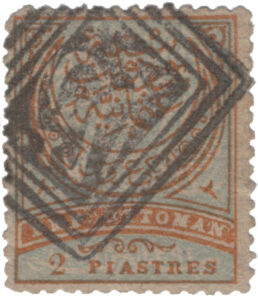






Major works from İstanbul have documented most of the Ottoman-Turkish postmarks used between 1840 and 1929, grouping them into design categories. There are many variations, including for individual post offices. Galata post office in İstanbul is recorded as using 92 separate postmarks. İzmir Station is known to have used 54, including those used on the travelling post office. With over 3500 post offices recorded, the scope for Ottoman marcophily, which is popular in Turkey, is extensive. I am content to scan and document postmarks that I can identify. Postmarks used Ottoman-Arabic and French languages. Above are examples.


The Ottoman mail used a wide variety of stamps between 1862 and 1922, when the Empire was abolished. The current focus of my traditional collection is on two designs, the Star and Crescent and “Ampir” (or Empire) designs. Both designs were issued on many occasions in a wide range of colours and denominations. Many trials, varieties and errors are known.
The Star & Crescent represented the Sultan as ruler and Caliph. The stamps were issued on multiple dates from 1865 to 1882 and used overprints. This 2 (٢) kurush stamp is from 1865.
With the Star and Crescent intended for domestic use, the “Ampir” stamps were introduced to be more easily read by foreign post offices, after the Empire joined the UPU in 1875. They were issued on multiple dates between 1876 and 1890 and were printed with a combination of variously coloured foregrounds and backgrounds. Piastre was the French equivalent of the Ottoman kurush.
Please have a look at 5 pages from Mike’s Ottoman Star & Crescent collection on the Members Displays page.
REFERENCES
Illustrated Ottoman-Turkish Postmarks, 1840 – 1929, Ten Volumes, by M. Ağaoğullari and M. Papuçcuoğlu, Isfila, İstanbul (Published between 2003 and 2010).
Postal History of the Ottoman Empire, Turhan Turgut, ALFA, İstanbul (2018).
Post Offices of the Ottoman Empire, Four Volumes by M. Bülent Papuçcuoğlu, İstanbul (2022).
The Human Story Behind a German Internee's Letter by Reinhard Krieger
For some years now I have been collecting German and Italian Prisoner of War and Internee mail to and from Australia during and after the Second World War. I speak German, and having learnt Latin at school, can cope with a bit of basic Italian. Reading, understanding, and up to a point analysing these letters is for me an important part of my interest in this area. “Prisoners of War” were soldiers and “Internees” were civilians.
Normally envelopes that are sold to collectors do not contain letters, but at the outbreak of WW2 the Australian Directorate of Prisoners via the Department of the Army authorised private printing companies to produce Prisoner of War/Internee notelopes, or in today’s terms lettersheets, to be distributed in all camps. Notelopes were a single piece of paper, with or without instructions, that became an envelope when folded. Camp inmates could post them anywhere in the world free of charge, by land or sea mail.
They are very collectable under the Postal History banner and of course due to their format, what the senders had written has been preserved.
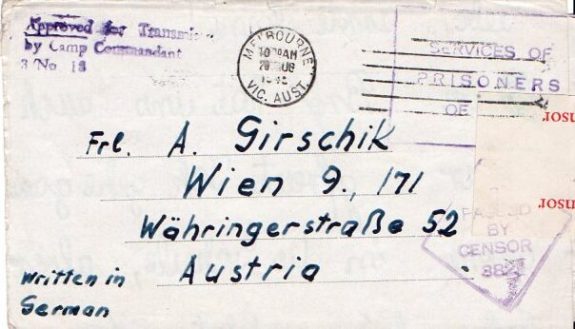
I recently obtained this notelope, which due to its content, stood out from all the other POW mail in my collection, and is worth depicting and describing in detail.
It was sent from Camp 3A Internment Camp Tatura, Victoria, dated 14th August 1945 on the back flap and cancelled on 20th August 1945 in Melbourne. It has been approved for posting at Camp 3 and been opened, resealed with tape, and passed by the Third Military District Censor. The imprint number is a.w. 200m 3/43.
All this is quite normal, except for the sender of the letter.
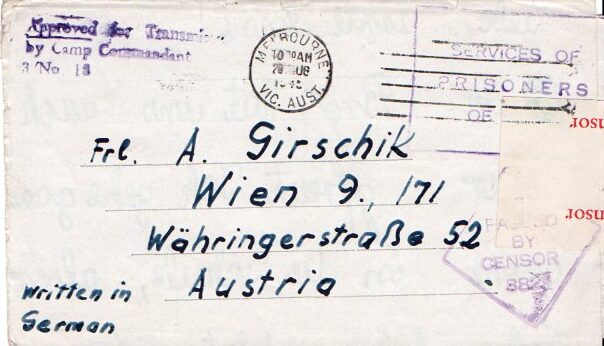
I recently obtained this notelope, which due to its content, stood out from all the other POW mail in my collection, and is worth depicting and describing in detail.
It was sent from Camp 3A Internment Camp Tatura, Victoria, dated 14th August 1945 on the back flap and cancelled on 20th August 1945 in Melbourne. It has been approved for posting at Camp 3 and been opened, resealed with tape, and passed by the Third Military District Censor. The imprint number is a.w. 200m 3/43.
All this is quite normal, except for the sender of the letter.

The writer is the Internee Peter Michael Reza Girschik, seven years old at the time of writing this letter, born 23rd June 1938 in Teheran. He was one of only four German children deported from Iran with their parents in 1941, after the British and Russian invasion of the country. They were shipped first from Basra on the “SS Rohna” to Bombay, where they were transferred ship to ship to the “SS Rangitiki”, which set off for Australia. All of the family were then interned in the Tatura Camp in Victoria.
He writes to his Aunt Anni in Vienna:
“ Dear Aunt Anni!
Your letter brought us much joy. I rather like to go to school, but I am not the best pupil. Drawing and reading I do very well but not adding up. My little brother Herbert, a nice baby, we love very much. I send greetings to you and Granddad.
Peter Girschik ”
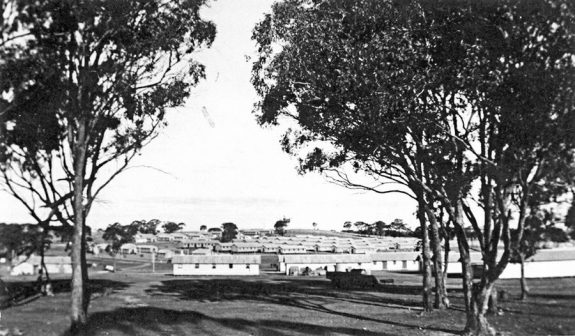
Tatura No. 3 Camp was used for Italian and German family groups from Iran, Australia, Palestine, and the Straits Settlements. Some Jewish families, as well as single women were also accommodated there. The Internees lived in huts which formed four individual sections, each surrounded by a barbed wire fence. They had communal workshops for carpentry and handicrafts and tended to a vegetable garden. The children attended camp school taught by German teachers.
His brother Herbert Friedrich Girschik, who he refers to in his letter as a nice baby, was born in captivity on 16th January 1945, at the Waranga Hospital in No.1 Camp, Tatura, shown in the photo.
Tatura No. 3 Camp was used for Italian and German family groups from Iran, Australia, Palestine, and the Straits Settlements. Some Jewish families, as well as single women were also accommodated there. The Internees lived in huts which formed four individual sections, each surrounded by a barbed wire fence. They had communal workshops for carpentry and handicrafts and tended to a vegetable garden. The children attended camp school taught by German teachers.
His brother Herbert Friedrich Girschik, who he refers to in his letter as a nice baby, was born in captivity on 16th January 1945, at the Waranga Hospital in No.1 Camp, Tatura, shown in the photo.

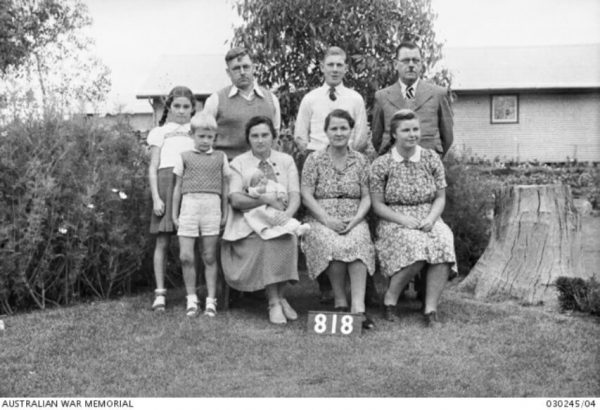
The Girschik family is seen in the photo. The blonde boy is Peter and his mother is holding his new born brother, Herbert. Peter’s father, Rudolph Girschik, was born in Vienna in 1910. He was a civil engineer who had worked extensively in Iran before the war, settling in Tehran in 1936. There he worked on the large central railway station complex and continued to work on several major rail projects in Iran, including the construction of road and tunnels, viaducts, and bridges for the branch lines.
On the 30th August 1941, the family was arrested at their home by members of the invading British Army and deported to Australia, along with about another five hundred German citizens from various cities in Iran. The Girschik family spent the next 5 years in captivity at No 3 Tatura Camp in Victoria.
After their release in 1946, Rudolph Girschik settled in Australia with his wife Elfriede and their three children Helga, Peter and Herbert. He and his wife became Australian citizens in 1957. Rudolph worked in Iran occasionally on engineering projects, and he and his wife lived there again from 1960 to 1964. From 1965 onwards, Rudolf worked in Western Australia on various infrastructure projects, the construction of the Art Gallery of WA, the Perth Concert Hall, the Hospital in Esperance, and the construction of the second railway line between Perth and Kalgoorlie.
Rudolf died in 1989 in Perth, and his ashes were privately buried by the Swan River in Guildford.
After the war, the letter writer, Peter Girschik, went to school at the Sisters of Mercy Boarding School, Mornington, Victoria, and studied further to qualify as an electrical engineer with the Victorian State Electricity Commission. He stayed with them most of his working life until privatisation in 1999, when he was made redundant. He married twice and raised four daughters and a son. He says he looks back on his life with pleasure and gratitude.
All this information was gathered from the Web. All it needs is a lot of patience, hours of searching for data in front of the screen and a general knowledge of the subject. It is however, very satisfying when it all comes together. I love doing it.
Please have a look at 5 pages from Reinhard’s German and Italian POW and internee mail from WW2 collection on the Members Displays page.
Members Articles for Download
In this section, members share some articles based on their collecting interests.
This 1984 commemorative first day cover celebrates several important firsts for Queensland. It was issued to celebrate the centenary of the Australian Coastal Pilot Service. At the top right it also shows an image commemorating the 1606 voyage of Luis Vaz de Torres in the Portuguese warship the San Pedrico. Torres was in command of the first European ship to travel through the Straits that now bear his name. Click here or on the cover to download or read an article by Professor John Pearn on the First Europeans in Queensland, very timely as we celebrate the Queensland Bicentenary this September. The article notes that this voyage also demonstrates origins of medicine and the military in Queensland.
This 1969 stamp celebrating the first flight of the Anglo-French Concorde on March 2nd of that year, is one in a set of three designed by noted British artist David Gentleman. One of the country’s most prolific stamp designers, he won the Philips Gold Medal for postage stamp design in both 1969 and 1979. Click here or on the stamp to read and download Paul Xavier’s article about David Gentleman’s work for Great Britain as well as for Nauru.
With the discovery of the wreck of the Montevideo Maru at great depth in the South China Sea on April 18th 2023, Australians are reminded of what is reckoned to be our worst ever maritime disaster. Click here or on the 1972 commemorative cover from Papua New Guinea to read and download Ivan Wilkinson’s piece on the Lark Force in World War 2 New Guinea, an account of the disaster and related mail.
Howard Florey was a pre-eminent and much lauded Australian medical researcher who was celebrated on stamps and banknotes. Click here or on the 2012 stamp to read and download Professor John Pearn’s article about Baron Florey, his life and work and the stamps and banknotes on which he was portrayed.
